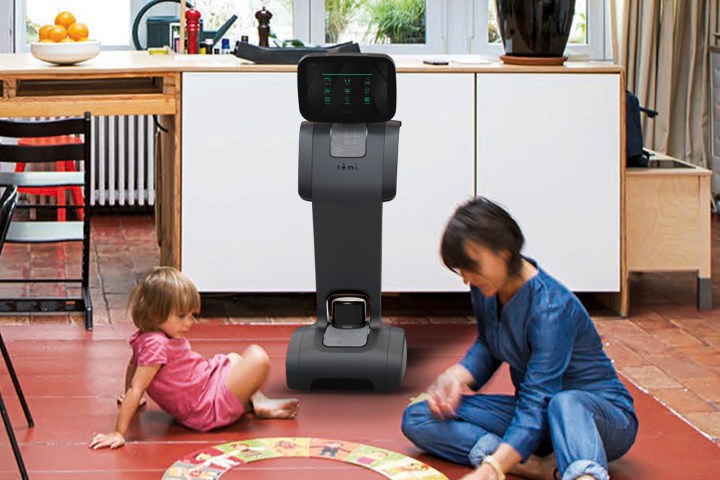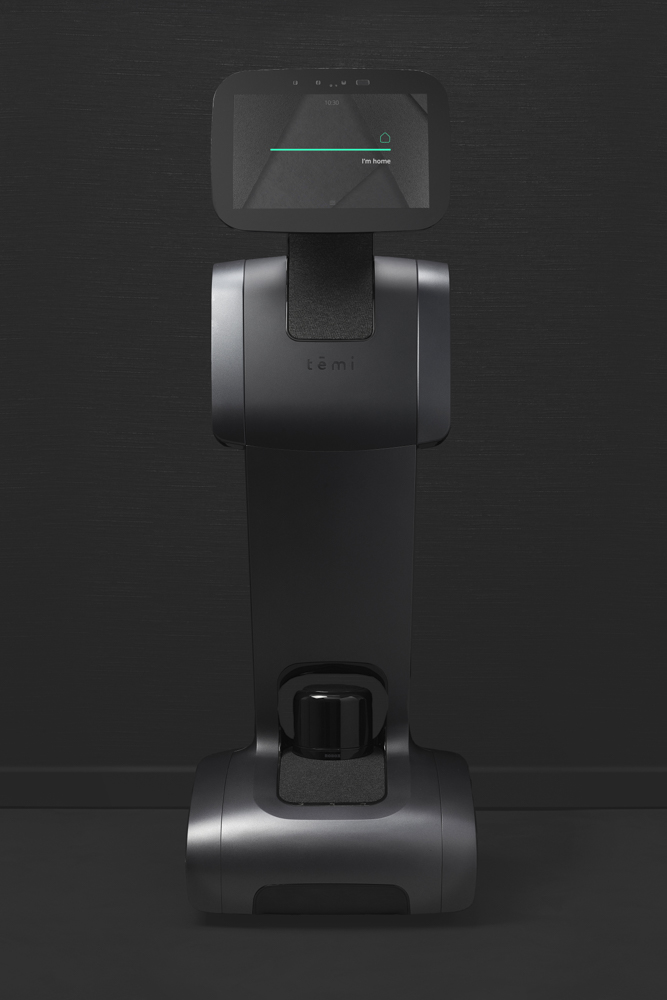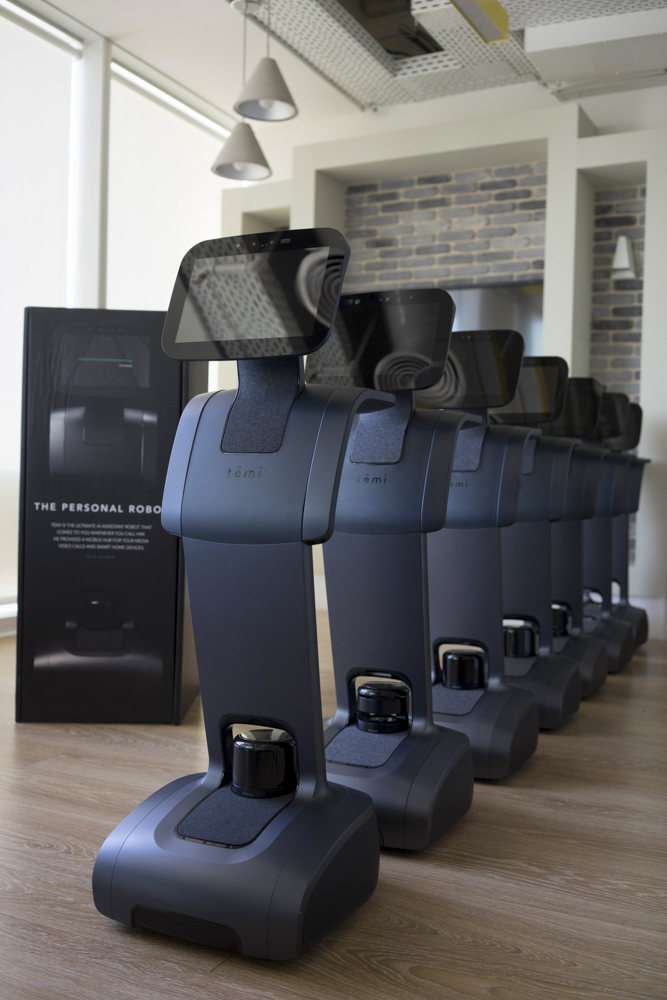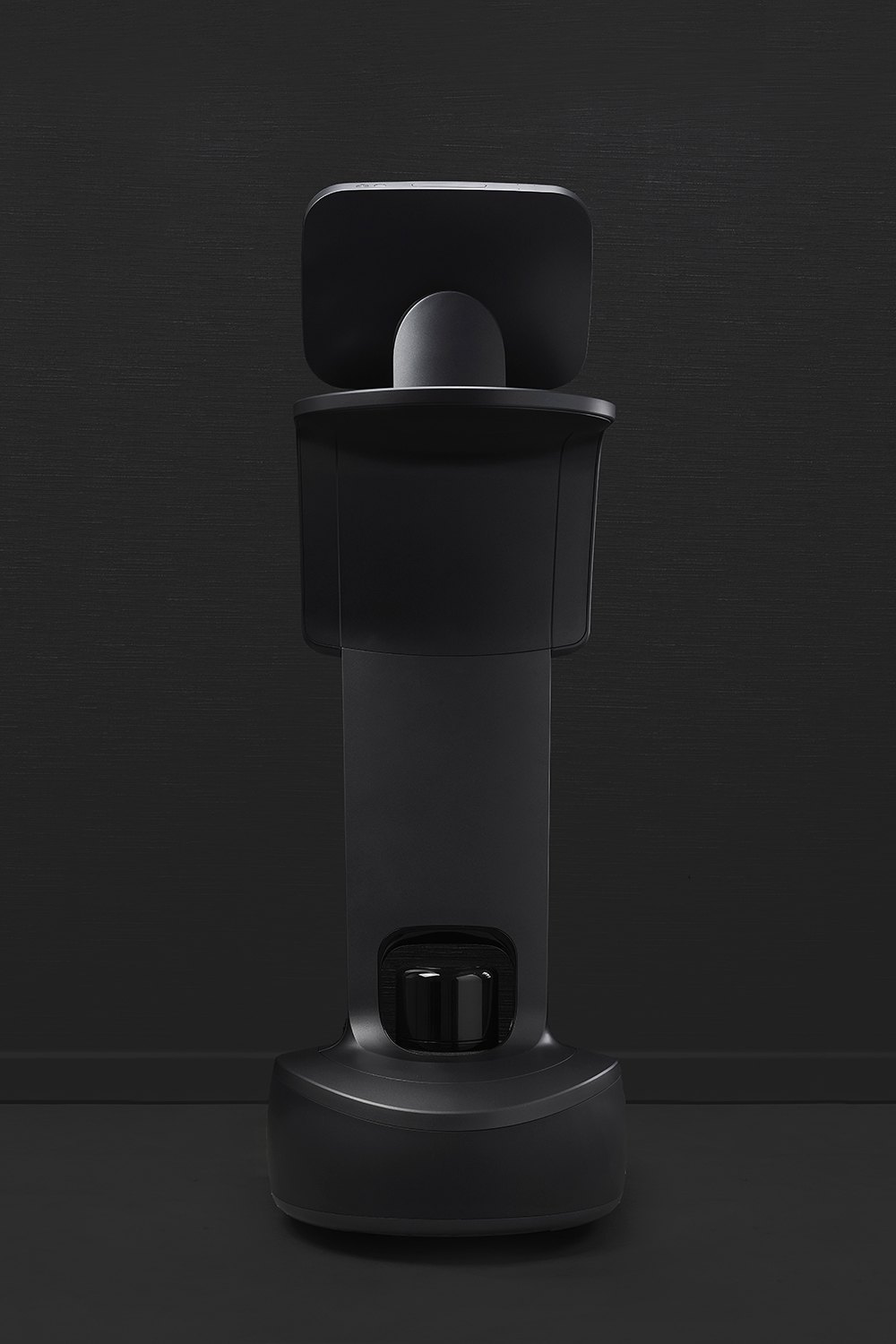
Roboteam started off with military robots that dispose of explosives or gather information as they cruise around terrain.
“There is zero connection between military and government robotics and consumer robotics except the DNA,” Yossi Wolf, Roboteam’s CEO, told Digital Trends. “The DNA of working products — it must have a very clear benefit or nobody will use it.”
When he noticed his grandmother’s hands shaking when she tried to drink a cup of tea or use a smartphone, Wolf decided to build a robot for her but wound up making one with features he thinks everyone will want.
“We are not replacing humans. We are serving them,” he said.
Three-feet-tall, 20-pound Temi has a 10-inch screen, microphones, speakers, and 60 sensors that add up to a cost of about $1,500.
“It’s a very advanced piece of technology,” Wolf said.
When its owner says “Hey, Temi,” the robot will roll over to it, ready to show a video or turn up the Nest thermostat. Using facial and voice recognition, it will make sure it calls your mom, not your spouse’s.
Guests can ask Temi the same type of queries they’d put to Alexa or Google Home, but they can’t make the bot move for safety reasons. If both you and your kid are trying to get Temi’s attention, he’ll prioritize whoever is closer.
Pathfinder
When you first introduce yourself to Temi, you’ll have to spend some time introducing it to your home. Double tap a button on his “head,” and you can let him know he’s in a specific location. It can be as generic as “the kitchen” or as specific as “the left side of the coffee table.”
Temi has to have perfect navigation, or else you’ll call it a stupid robot.
As Temi starts following you around, the robot is constantly updating its map and learning the fastest path between two places. Its depth sensors and camera are sophisticated enough to tell if you dropped a business card on the carpet and then decide whether roll over it or go around.
Once Temi knows where the kitchen is, you can ask it to go there or tap the location in the smartphone app. You can’t drive it around like a remote-controlled car, though.
“To control a robot is complicated,” Wolf explained. “They are not intuitive at all.”
If you’ve sent a robot to vacuum your floors before, you may have noticed it can easily avoid walls but might ding a table leg as it sucks. Avoiding objects and location awareness are crucial to a home robot.
“You cannot afford this behavior in a personal robot, because then you will say, ‘Stupid robot. I called him and he’s stuck in there looking for me,’” Wolf said, adding there’s no comparing Temi’s sensors to a robot vacuum’s: “It’s like an iPhone versus a Motorola walkie talkie.”
In addition to its location button, Temi also has a privacy button that takes the bot offline. Its sensors will still work, so it won’t fall down the stairs or run into your napping dog no matter what. The bot has an eight-hour battery life and takes about three hours to charge. Naturally, it can take itself to its slim docking station when power’s getting low.
A robot that learns and teaches
While Roboteam concentrated on the entertainment and personality aspects of Temi, it hopes third-party developers will take advantage of its open Android SDK. That will it learn more tricks and pair with more devices, as Wolf sees it as having the potential to be a mobile smart-home hub.
The company partnered with an Alphabet offshoot to create certain aspects of Temi’s AI and personality but Wolf said its knowledge base is the same as Alexa’s or Google Home’s. In November, 1,000 Temis will make their way into homes for beta testing before they start answering to the general public.
Long-term, Wolf sees Temi being a telemedicine tool, friend that plays hide-and-seek with the kids, teacher that interacts with household objects as you learn a new language, and maybe even hotel concierge (albeit one who can only help transport a fairly small piece of luggage).
“The game-changer is that Temi is mobile,” said Wolf. “It can do things that a smartphone or static box cannot do for you. It’s a really new experience of consuming technology.”
Editors' Recommendations
- This 4-in-1 washing machine combo from Eureka cleans almost everything in your home
- Self-emptying robot vacuums: Do you really need one?
- 6 things you didn’t know Apple Homekit could do
- Your Roomba robot vacuum now doubles as a security guard
- Ecovacs introduces three new robot vacuums for homes of all sizes








